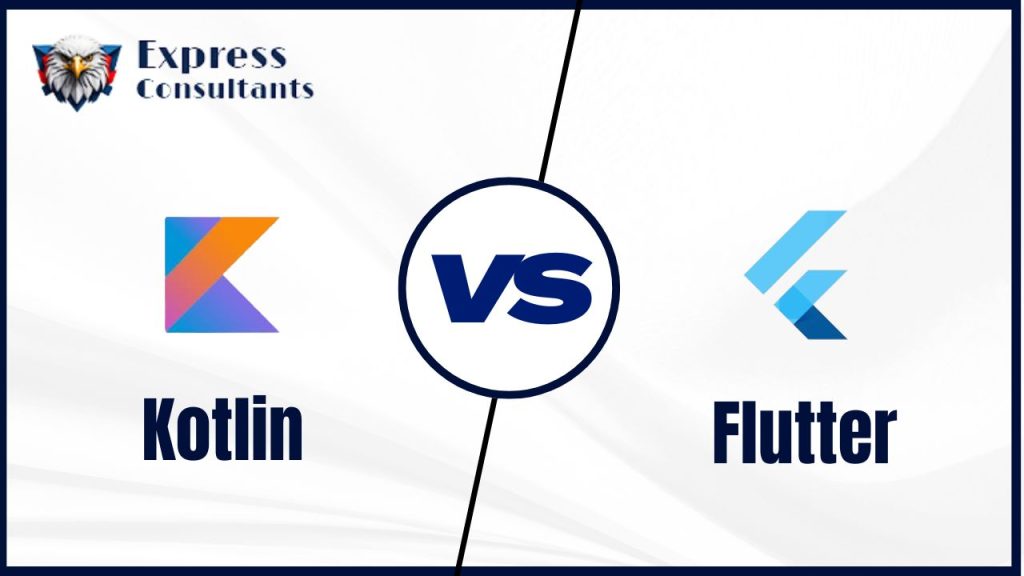
Kotlin vs Flutter: Which One is Better in 2024?
September 26, 2024Kotlin vs Flutter: Which One is Better in 2024?
“Did you know that Kotlin’s popularity skyrocketed by 80% among Android developers in the last five years?”—That’s right, this powerful language, introduced by JetBrains, has taken the development world by storm. And then there’s Flutter, Google’s ambitious toolkit that allows you to create beautiful native apps on a single codebase. With these two giants, the question on everyone’s mind is: Which one is better in 2024? Let’s dive deep into Kotlin vs Flutter, breaking down the differences, strengths, and scenarios where each one truly shines.
What is Kotlin and Why Do We Use It?
Kotlin is a modern programming language developed by JetBrains, the same folks behind IntelliJ IDEA. It runs on the Java Virtual Machine (JVM), making it compatible with Java code. Over the years, Kotlin has evolved from just being a “better Java” to being the official language for Android development. It’s concise, null-safe (bye-bye NullPointerExceptions!), and has a robust set of tools.
But why do we use Kotlin? Simple—it’s powerful yet easy to learn. Kotlin allows developers to write cleaner, more maintainable code. It reduces boilerplate code significantly. In the Android world, Kotlin is like that cool new tool that just works and makes life easier. Android Studio fully supports it, and Google recommends it as the language of choice for Android apps. Plus, Kotlin isn’t just confined to Android. You can use it for backend development, cross-platform apps, and even web development.
Pros and Cons of Kotlin
Let’s talk Kotlin. This language isn’t all rainbows and sunshine—although it’s pretty close.
Pros:
- Interoperability with Java: One of Kotlin’s biggest strengths is that it’s 100% interoperable with Java. You don’t have to start from scratch when switching to Kotlin—you can use your existing Java codebase.
- Conciseness: Kotlin cuts out unnecessary boilerplate code, so you can do more with fewer lines. It’s great for those who hate repetition.
- Null Safety: Kotlin has built-in null safety. This means fewer runtime crashes due to null pointers, a feature that Java developers often envy.
- Coroutines: With Kotlin, asynchronous programming is made easy through Coroutines, which simplifies threading tasks. This makes building complex apps a breeze.
Cons:
- Learning Curve: Even though Kotlin is touted as an easy-to-learn language, it’s still more complex than Java for complete beginners. Some developers struggle with its unique syntax and functional programming elements.
- Compilation Speed: While Kotlin’s code is more concise, its compilation times can be slower compared to Java, especially for large projects. It’s improving, but it’s something to consider.
- Smaller Community: Although Kotlin is growing fast, it still doesn’t have as large a community as Java or Flutter. This means fewer libraries, fewer resources, and sometimes, less support.
What is Flutter and Why Do We Use It?
Now, Flutter is a different beast. Created by Google, it’s a complete UI toolkit designed to build apps for Android, iOS, the web, and even desktop—all from a single codebase. Flutter doesn’t just help you create apps, it lets you build beautiful, natively compiled applications. The secret? Its Dart programming language, which compiles to native ARM code, making it incredibly fast.
So, why do we use Flutter? Because it’s efficient, cross-platform, and has the power to deliver smooth animations and a modern user experience. For startups and businesses with tight deadlines, Flutter allows you to create feature-rich apps with a shorter time-to-market. If you’re thinking about creating an app without worrying about platform-specific codebases, Flutter is your go-to. Plus, it has a massive community, Google backing, and support for Material Design and Cupertino, making it a favorite among UI/UX designers.
Pros and Cons of Flutter
Now, Flutter isn’t without its quirks. While it seems like the shiny tool for cross-platform development, it’s got its pros and cons too.
Pros:
- Single Codebase for Multiple Platforms: Flutter allows you to write code once and deploy it across Android, iOS, web, and desktop. This drastically reduces development time and costs.
- Fast Development: Flutter’s hot reload feature makes the development process much faster. You can see changes in real-time without restarting the whole app.
- Great UI/UX Capabilities: Flutter’s custom widgets are a dream for designers. Whether it’s Material Design or Cupertino (iOS-style), Flutter delivers pixel-perfect interfaces.
- Strong Community Support: With Google behind it and a large, active community, Flutter is continuously evolving, bringing in new features and fixing bugs quickly.
Cons:
Limited Access to Native APIs: While Flutter covers most APIs, there are still certain platform-specific features where it struggles. You may need to write native code to get some functionalities working seamlessly on iOS or Android.
Large App Sizes: One drawback of Flutter is the large size of compiled apps. This could be a problem for users with limited storage, especially on mobile devices.
Dart Language: Although Flutter is fantastic, not everyone loves Dart. It’s a lesser-known language compared to Kotlin or Java, and developers might need time to adapt.
Flutter vs Kotlin Comparison
When we compare Kotlin vs Flutter, it’s important to remember that they’re built for different use cases. Kotlin is more focused on Android development and can handle native app performance exceptionally well. Flutter, on the other hand, is a cross-platform solution, designed to build apps that work on multiple platforms with minimal effort.
| Flutter vs Kotlin Comparison | ||
| Feature | Kotlin | Flutter |
| Platform | Native Android | Cross-Platform (iOS, Android, Web, Desktop) |
| Language | Kotlin (JVM-based, interoperable with Java) | Dart (compiled to native code) |
| Use Case | Android development, backend services | Cross-platform app development |
| Performance | Best for Android native performance | Near-native performance across platforms |
| UI/UX | Follows Android UI guidelines | Custom widgets for both Material and Cupertino design |
| Community Support | Growing but smaller than Java | Strong and backed by Google |
| Development Speed | Moderate (depends on familiarity with Java) | Fast, thanks to Hot Reload |
| Learning Curve | Easy for Java developers, but some complexity | Requires learning Dart, less known than Kotlin |
| App Size | Smaller native app sizes | Larger app sizes compared to Kotlin |
| Tooling | Fully integrated with Android Studio | Uses its own IDE (Flutter SDK with Visual Studio Code or Android Studio) |
When to Use Kotlin?
- Native Android Development: If you’re building an Android app that requires the best possible performance, Kotlin is the way to go.
- Interoperability with Java: When you have an existing Java codebase or need to integrate Java libraries, Kotlin offers smooth interoperability.
- Backend Development: Kotlin can also be used for backend services, especially with frameworks like Ktor.
When to Use Flutter?
- Cross-Platform Development: If your goal is to build apps for both Android and iOS, Flutter allows you to write a single codebase that can run on both platforms. This saves time and effort.
- Quick Prototyping: Flutter’s hot reload makes it ideal for quickly building and testing UI components.
- Beautiful UIs: When your app requires stunning visuals, Flutter’s custom widgets and fast rendering engine make it a solid choice.
Conclusion: Kotlin vs Flutter—Which One is Better in 2024?
So, Kotlin vs Flutter—who takes the crown in 2024? Well, it really depends on what you’re building. Kotlin is your go-to for native Android development and complex apps with seamless Java integration. Flutter, on the other hand, dominates when it comes to cross-platform apps with dazzling UIs. Both have their strengths and trade-offs, but the best one for you boils down to your project requirements.
In the end, whether you choose Kotlin or Flutter, the real winner is your app.
You may also like : –
- E-commerce Website Development: Why It’s More Important Than Ever
- Best Web Design Company in USA – Express Consultants
- 8 Best JavaScript Backend Frameworks
Kotlin vs Flutter: Frequently Asked Questions
1. Which is better for Android development, Kotlin or Flutter?
Both Kotlin and Flutter are great for Android development, but it depends on what you’re building. If you’re working on a native Android app and need the best possible performance, Kotlin wins hands down. It’s officially recommended by Google for Android development. But, if you need to launch an app on both Android and iOS with minimal effort, Flutter is the way to go.
2. Is Kotlin harder to learn than Flutter?
Kotlin isn’t difficult, especially if you’re familiar with Java or other JVM-based languages. Flutter, however, requires learning Dart, which may feel unfamiliar if you haven’t used it before. But, both have their learning curves, If you’re an Android developer, Kotlin might feel more natural, while Flutter is better suited if you’re diving into cross-platform development.
3. Can I use Kotlin for iOS development?
Technically, yes with Kotlin Multiplatform, you can share code between Android and iOS. However, the experience isn’t as seamless as using Flutter, which was designed specifically for cross-platform development. Kotlin Multiplatform is still evolving, so it’s worth keeping an eye on, but if your focus is primarily on cross-platform, Flutter’s more polished.
4. What about app performance who wins Kotlin or Flutter?
For native Android apps, Kotlin wins with smoother performance because it directly integrates with Android’s ecosystem. But Flutter is no slouch—it offers near-native performance thanks to its Dart-to-native compilation. So, if you need a cross-platform app, Flutter performs quite well on both Android and iOS.
5. Do Flutter apps have larger file sizes?
Yeah, that’s one downside. Flutter apps tend to have larger file sizes compared to Kotlin-based Android apps. This is mainly because Flutter includes a large number of libraries and frameworks necessary to run on multiple platforms. If app size is critical to you, Kotlin might be a better choice for Android-only apps.
6. How does the development speed compare between Kotlin and Flutter?
Flutter can speed up development when building for multiple platforms (Android and iOS), thanks to the hot reload feature that lets you instantly see changes. Kotlin, however, is excellent for building Android apps fast, especially if you already know Java. If cross-platform is your goal, Flutter offers quicker development cycles.
7. Can I use both Kotlin and Flutter in the same project?
Some developers use Kotlin for Android-specific features while leveraging Flutter for the UI and cross-platform capabilities. It’s a bit more complex to manage but gives you the best of both worlds.
8. Which one has better community support Flutter or Kotlin?
Both are supported by massive communities, but Flutter has been growing at a rapid pace due to its cross-platform capabilities and Google’s backing. Kotlin is also rising in popularity, especially in the Android world. You’ll find plenty of tutorials, forums, and support for both, but Flutter might offer more diverse resources since it’s used across platforms.
Ready to unlock your business's potential with custom software
Contact Us


